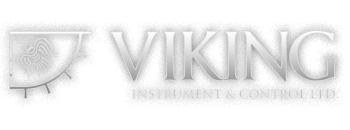Sanitary gauges are designed for applications in food, pharmaceutical and biotechnical industries where sanitary conditions are the priority. In the production of food and pharmaceuticals, safety of the public is the foremost concern. In the chain of processes within a plant, pressure measurement plays a key role; however, it is important that the design and installation of the sanitary gauges be fulfilled optimally to ease the process of cleaning. In view of the requirements towards consumer safety and cleanability, choosing the right sanitary gauges, material and surface finish quality must be given ample consideration.
Important considerations in the choice for sanitary gauges
- Material – austenitic stainless steel is the standard metal used in wetted areas in the food and beverage industry as well as the pharmaceutical industry due to its solid corrosion protection against disinfectants and other cleaning media. The sanitary gauges must be designed with materials that will specifically meet standards; for example; for food production it must comply with FSMS or Food Safety Management System.
- Surface – another important aspect with regards to CIP/SIP processes is the quality of the surface finish that comes in direct contact with process medium so as to allow easy cleaning of the sanitary gauges. In order to prevent biofilms, the wetted surfaces must be passive and free from any microscopic flaws. In addition to the quality of the surface finish, surface roughness is another consideration for cleanability. Electropolishing can smoothen the surfaces and reduce roughness.
- Sealing materials – it is important to make certain that sealing materials are toxicologically harmless and sufficiently resistant to abrasion from aggressive cleaning and disinfecting media. In the pharmaceutical industry, the sealing materials must be stable in superheated steam at high sterilization temperatures. Whatever materials are used as sealing elements must comply with regulatory measures of the industries concerned.
- Process connections – those that are used in CIP-capable equipment should not constitute any risk with respect to sterility. They should ideally be suited to equipment that needs to be removed for cleaning. If the sanitary gauges with these process connections are operated with CIP cleaning the appropriate profile sealing needs to be used.
- Housing – so that the equipment can be easily cleaned from the outside, hygienically-designed housings must be used. It should not have any gaps or corners with IP protection specifically suited to harsh conditions of cleaning. Particularly for food processing, it is critical to clean all instruments, machines and equipment after production and this includes the sanitary gauges.
Advantages of using the diaphragm seals
Diaphragm seals separate the sanitary pressure gauges, pressure transmitter and pressure switch from the measuring medium. It is therefore essential to ensure that the process connection is free from dead spaces or dead spaces should be reduced to the minimum. The isolation is effectively provided with the use of flexible diaphragm seals where the internal space between the diaphragm and the sanitary pressure gauge is completely filled with the system fill fluid. The process pressure will be transmitted from the measure medium through the flexible diaphragm into the fluid and from there to the measuring instrument.


